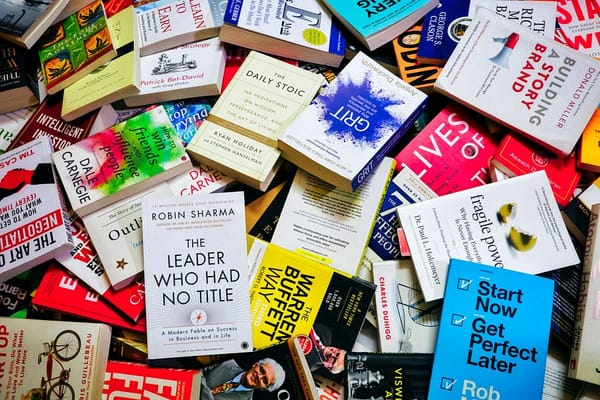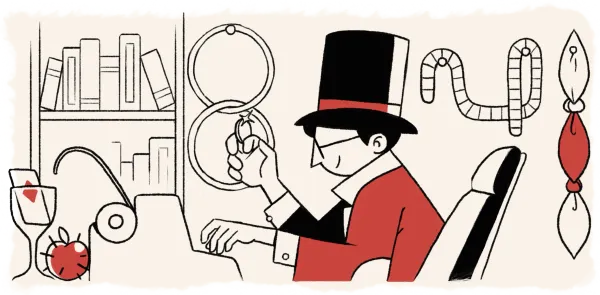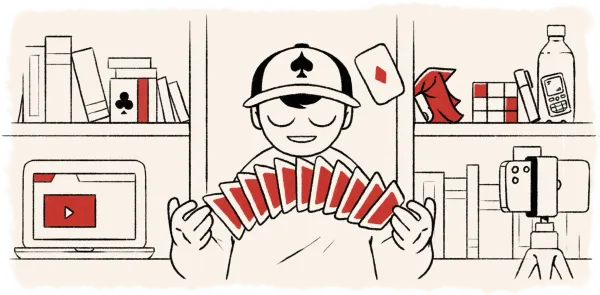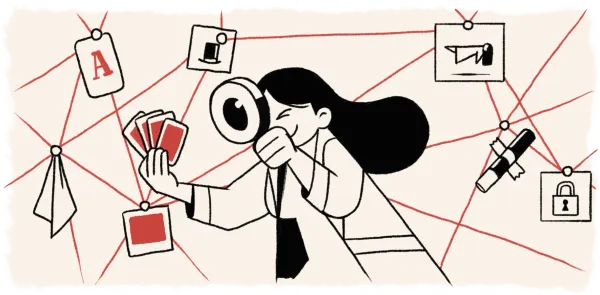3 'Pre-Show' Examples You Can Steal for Yourself
Learn the secret magic principle.
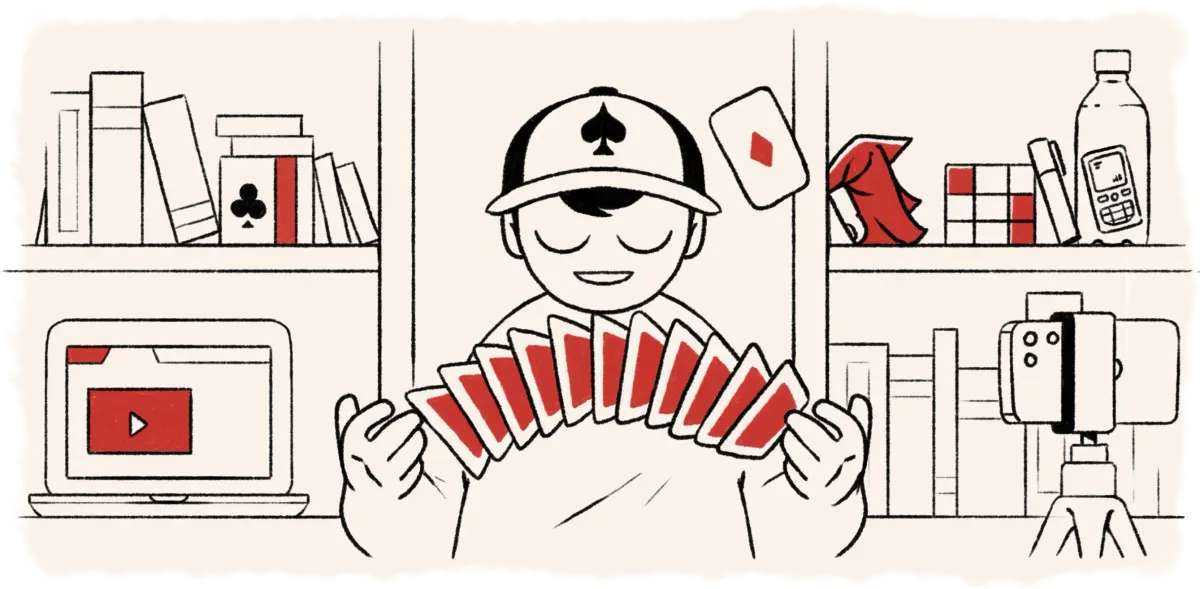
I've written on TV magic shows for over a decade now, as well as live theatre shows and all sorts of projects for big-name magicians. Occasionally, and far less often than some might expect, we'll use a secret magic principle called "pre-show."
Pre-show is a magic technique which relies on part of the routine taking place before the trick for the larger audience begins. The main audience, be that one in a theatre or perhaps watching at home has no idea that something took place earlier, usually involving the hero spectator that's influencing the routine.
Let's look at three ways you can incorporate the infamous pre-show technique into your existing magic tricks to make them more fooling.
Let me note two things quickly:
- Some magic consultants view pre-show as simply anything that happens before the show or before the camera starts rolling. I find this a rather lazy definition that can lead to lazy execution. If you're performing solo, you should never view your routine as simply having a pre-show, beginning, middle and end. Instead, I recommend you view any routine that is improved with pre-show as having two timelines, both with beginnings, middles and ends. The hero spectator who takes part in the pre-show simply has an earlier start point on the timeline than the broader audience who joins it later.
- Pre-show is totally different if you have an accomplice or confederate do it for you. This might be someone pretending to work at the theatre or on your production crew, or perhaps it's your partner pretending to be overprotective before you perform your trick for friends – in all scenarios, you must be mindful of your motivation. You need a good reason for the pre-show in the eyes of the spectator – perhaps it's to save them from embarrassment, save time, help them, etc. If your pre-show involves a magic element like a trick, then it should always be carried out by the main magician, in my opinion.
Pre-show has become a bit of a fad amongst magicians in recent years. I have a theory on why this is the case, but some magicians are not going to like it:
Pre-show is an easy thing many magicians can use to dismiss tricks that fool them on television. If they're fooled by visual magic on a TV show, they'll blame a camera trick. When non-visual magic tricks fool them, they'll blame pre-show.
I can tell you that when I worked for Dynamo, many magicians would dismiss the show in conversations because they believed he used too much pre-show. Then they'd tell me a specific example of a trick, and because of my NDA, I had to stop myself from laughing because the example actually involved zero pre-show.
I helped write Magic For Humans on Netflix. Many magicians, sometimes well-known magicians, have since told me they dislike the show because they believe it uses too many camera tricks. Then they point to the example of Willman pulling his wife out of a foldable bag, and in that case, I actually can't stop myself from laughing because that's definitely not a camera trick.
"Too much pre-show" and "Too many camera tricks" are often shorthand for "It fooled me, and I can't admit it."
There's also a feeling amongst some magicians that pre-show is a kind of "cheating" because there's sort of odd belief they have that you should be able to work out a magic trick by watching it enough times.
Pre-show suits TV. Much like theatre shows, from which it got its name, there's an easy division between the main trick for the larger audience and the time before it. You can easily cut the first part of a routine in the final edit.
Some magicians dismiss pre-show as anything that takes place before the cameras roll, but this isn't always the case. If it's the magician doing the pre-show, the cameras should be rolling as if you intend to use it in the final edit.
Most magicians have no idea what pre-show is, and maybe it's because it's often brought up dismissively and because it takes place behind closed doors, but magicians can get lazy when they try to use the principle.
Pre-show is not just telling the spectator what to do before the show. That's called stooging. And never in my decade of working with TV magicians has a routine relied entirely on pre-show. Only use pre-show to enhance your magic; any trick should be performable without it.
Anyway! Let's Mr Miyagi you and explain three examples of pre-show.
- How to plant a favourite playing card or Taylor Swift song into the mind of your spectator.
- How to create the illusion that a spectator is freely choosing any chocolate bar from a large candy shop.
- How to use pre-show to put objects into spectators' pockets in two easy and completely open ways.
These are not necessarily the best examples, but I've chosen them to illustrate how you can think about pre-show in your magic and why motivation almost always becomes the most crucial factor.
Wax on, wax off.
1: Do You Have a Favourite?
An entry-level variation of pre-show is to help a spectator decide their favourite X for a performance. This could be anything from their favourite playing card to their favourite meal on a new restaurant menu.
All the main audience will see is the magician asking the spectator to name their favourite playing card, and the spectator will say the four of hearts.
In most scenarios, a simple open card force would be more fooling.
But asking them to name their favourite card might be faster and easier if the trick doesn't involve handling a full deck of cards.
During your pre-show, ask the spectator if they have a favourite playing card, and then quickly point out how ridiculous that is (because it is). No one has a favourite playing card, and if they do, it's probably something obvious, like a queen or an ace. Favourite cards are usually attached to important memories, so let's decide on a favourite card for you and create a good memory for it. They choose the four of hearts, and you perform an ambitious card routine with their new favourite card.
Shortly after, while performing magic for a larger group of friends, you can ask the same spectator what their favourite playing card is. They'll say the four of hearts: the card you forced during the pre-show trick (or maybe even just let them choose randomly and took note of it).
The larger audience is unaware of that earlier pre-show, so it looks like you simply asked if they had a favourite playing card, and they said the four of hearts.
The hero spectator will not forget that you already know their favourite card, so the trick still has to be fooling and impressive for them regardless.
I consider this "favourite" packaging the most entry-level use of pre-show, and in all honesty, I usually avoid it as much as possible.
But it's a good way for newbies to wrap their heads around the concept of pre-show and how important the scripting and delivery can be. If you simply forced a card earlier and asked the spectator in front of the main audience to "name any playing card", you risk them naming something else, or worse, saying, "Do you want me to name the one I chose earlier?"
Asking, "What's your favourite playing card?" is easy enough, and in this scenario, it's basically the same as asking, "What was the card you chose earlier?"
Well-versed magicians who have simply forced something as pre-show might cleverly script it like this:
"I'm going to ask you to think of an X. Do you already have one in mind?"
There's a certain duality to this statement; if you hear this as the hero spectator, you will think of the X you chose earlier, but to a broader audience, it sounds like the hero spectator is being asked to freely choose one in their mind on the spot.
X could be a meal, playing card, song, number, colour, etc..
So, how would this look if you were performing on TV with an accomplice and you needed the spectator to name a specific Taylor Swift song?

